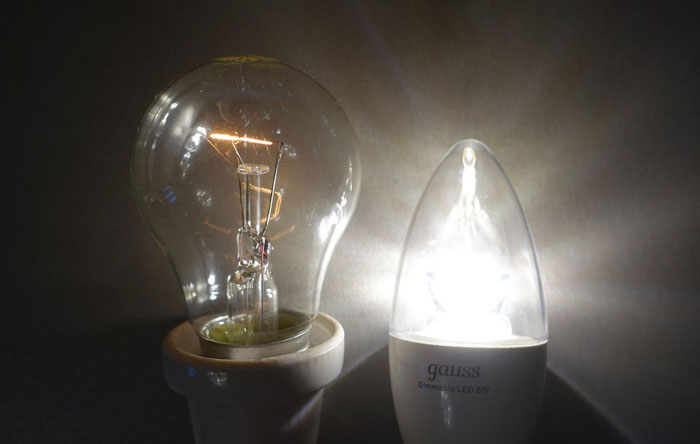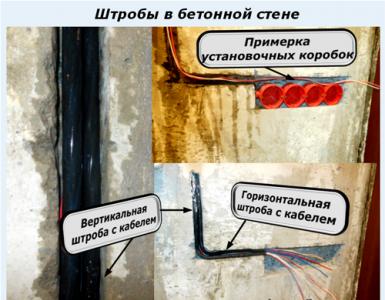Dimming LED fixtures and lamps - myths and real problems.
Today, many people already know that, unlike simple incandescent or halogen lamps, not all LED lamps are dimmable.
But if you still need to control the brightness of LED lighting, how do you usually choose such lamps and fixtures for dimmer?
First of all, we look at the packaging. It must have a special dimmable icon on it. 
Such lamps will cost a little more than conventional LED ones. In conventional, the driver compensates for voltage fluctuations to the optimum operating current.
Therefore, if you connect a simple Led lamp to a dimmer, it will still shine with a constant brightness, no matter how you unscrew the knob. In extreme cases, the light bulb will blink.
No matter how sophisticated and modern dimmer you buy, you will not be able to fix the situation. Although there are rare exceptions.
When is a conventional LED lamp dimmable?
 Sometimes an ordinary LED lamp can still give "signs" of dimming, even if it is not intended for this. This applies primarily to cheap Chinese copies.
Sometimes an ordinary LED lamp can still give "signs" of dimming, even if it is not intended for this. This applies primarily to cheap Chinese copies.
They put the most primitive driver, without any protection against overcurrent and voltage surges. It is this design flaw that allows them to randomly dim. 
And within very narrow and limited limits. For other LED lamps, this is basically impossible. Therefore, it is better to always look in stores for models with the Dimmable icon. 
By the way, the opposite rule immediately applies - if you are not going to adjust the brightness of your lamp, then it makes no sense for you to overpay and purchase exactly dimmable items. Keep this in mind.
There are lamps that seem to be dimmable, but poorly. At the same time, some craftsmen are trying to cheat, and include in the chain of parallel-connected, poorly regulated LED specimens, one ordinary incandescent lamp. 
Such a scheme greatly affects the overall resistance, especially when the temperature of the tungsten filament changes. This feature allows, in certain cases, to expand the dimming range of LED bulbs.
However, the service life of such a circuit and its individual elements will be far from that declared by the manufacturers. Most lamps will soon fail.
Filament lamps and dimmer
In addition to the usual SMD-based LED lamps, the so-called filament and similar lamps have recently become popular. They are very similar in appearance to simple incandescent bulbs. 
By this way, they bribe and mislead many. Most people think that they are purchasing a full-fledged replacement for the “Ilyich light bulb”, only a more economical and durable option.
However, it is still the same LED lamp and is subject to the same dimming laws and regulations as its counterparts.
1 of 2


At the same time, if you nevertheless picked up a dimmer for such a light source, and are going to replace all your incandescent lamps with it, do not forget about significant differences and not very pleasant effects.
The fact that most LED lamps begin to flicker strongly with a decrease in brightness and their ripple coefficient increases sharply is no longer a secret to anyone. 
But at the same time, many are still surprised that by connecting a modern lamp to a dimmer, they do not get the same comfort and warmth effect as from conventional incandescent bulbs.
Change color temperature
At maximum power, the light bulb will shine as it should, according to its characteristics. But when dimming and reducing the brightness, you will get a completely different light than expected.
The fact is that the color temperature of an incandescent lamp changes significantly when dimmed. And with your vision, voluntarily or involuntarily, you notice it.
It does not remain constant at all in the region of 2700K, but goes to the limit of 1500K. And only at maximum heat, those same 2700K will be issued. 
Moreover, if an increased voltage of more than 220V (240-250V) is applied to the light bulb, then it will not give out these same 2700K at the maximum. 
But the LEDs cannot repeat such a “focus”. Whether this is a disadvantage or an advantage, it is difficult to say. But the fact remains.
When the brightness is reduced, the LED lamps shine differently than we are used to. And you will feel it with your eyesight. There will be no that "lamp" and cosiness. 
It turns out that even when the dimmer is turned to the very minimum, the light in them is emitted at the same temperature as stated on the package or case.
If it is indicated that the color temperature of this instance is 2700K, then it will remain so. It doesn't matter what dimmer you connect to it. 
Visually, the difference is very strong. The light is whiter. Here's a good example for you.
In one chandelier, simple incandescent bulbs (on the right) and one LED (on the left) are simultaneously screwed in. All have the same temperature and equivalent power. This is how the chandelier shines at maximum. 
As you can see, there is practically no difference. And so, the same chandelier glows at the minimum of the unscrewed dimmer. The result is what is called on the face. 
This will be especially noticeable if you use a dimmer to turn a simple lamp into a night light. In this case, it is better not to save money and choose real night lamps that provide full-fledged subdued and comfortable light in the bedroom. 
In order to somehow influence the situation, recently they began to mass-produce LED lamps with a temperature of 2000K. Some manufacturers even give the glass flask an orange tint. 
All this is just the same and is connected with an attempt to achieve maximum similarity, with the good old incandescent bulbs that we love so much.
Even most vintage LED lamps, which simulate a filament inside, also come with this temperature.
Minimum brightness level
Another annoying point is that with most instances you will never achieve a uniform decrease in brightness, down to zero values.
LED lamps cannot make such a minimum illumination of the room, which can be achieved with a barely luminous tungsten filament. That is, at the very maximum twisting of the dimmer (in the direction of decrease), a fairly visible stream of light will still be observed. 
You want to lower it even more, but nothing will come of it. Then the light will just turn off.
Also, do not forget that different dimmers and light bulbs each have their own minimum level. 
It seems that they checked the lamp in the store and you liked everything. They brought it home, turned it on through their home brightness control, and the picture was completely different.
Dimmer incompatibility
And there is also the incompatibility of certain types of lamps with certain types of dimmers.
This may be due to the difference in dimming principles. The phase of the sinusoid in one device is cut off at the leading edge of the Leading edge (R, RL), and in the other at the trailing edge of the Trailing edge (RC, RCL). Accordingly, in one case the lamp will work normally, but in the other it will not. 
Get acquainted with the characteristics and check all the inscriptions in the store. 
Another difference that already applies to filament lamps is that they light up a little later. And not only ordinary light bulbs, but even later than their other LED counterparts.
You twist the regulator from the very minimum, but they do not light up. And only when a certain value is reached, light begins to appear. 
Their actual dimming interval is somewhat shorter than that of other species. Therefore, if you are already going to buy filament lamps, then look for special brightness controls for them.
On almost any dimmer, you can catch the position when the bulbs begin to blink, as it were. This is due to their unstable operation in the lower and upper limits of regulation.
The lamps of some manufacturers even begin to crack at the extreme points of adjustment. All these problems can be solved with adjustable dimmers. You can throw out a certain range in them and configure the microcontroller for the desired mode of operation.
Do dimmers save energy
Another myth is that you save energy when using dimmers. First of all, this applies to incandescent lamps.
Most users still believe that if you leave ordinary incandescent bulbs in the lamp and unscrew the dimmer by 50%, then you will pay 2 times less for light. This is not entirely true. 
To reduce the brightness of an incandescent lamp by 2 times, you need to lower the voltage by about 80%. In this case, the current strength will decrease slightly, due to the non-linear resistance of the filament.
The actual power consumption of the lamp in this case will be 75-80% of the original. You will receive 2 times less light, and save only a miserable 20%. 
Therefore, the only real savings are achieved not by dimming, but by replacing simple lamps with LEDs.
Longer service life
A positive point and advantage of constantly running LEDs in a dimmed mode is the increase in their service life. 
For example, if you initially take a light bulb twice as powerful as you needed, and unscrew it with a dimmer to the required brightness, such a lamp will last 100% not only for the period declared by the factory, but also much longer.
But with halogen lamps, the situation may be the opposite. In addition, dimming leads to a decrease in heat generation. 
Based on the foregoing, experts always recommend buying dimmers and lamps for them in the same store, with a visual check for compatibility of their functions. In this case, you will 100% not encounter any surprises and troubles.













